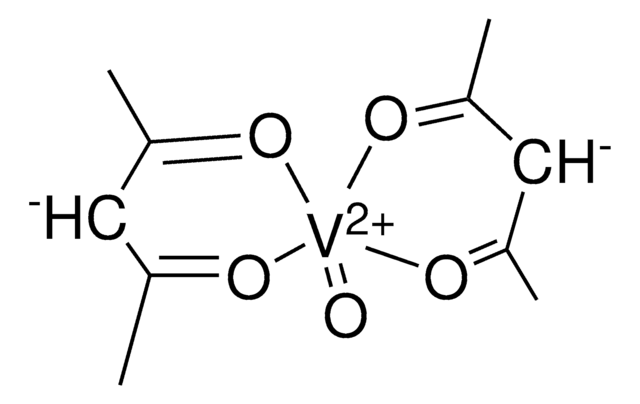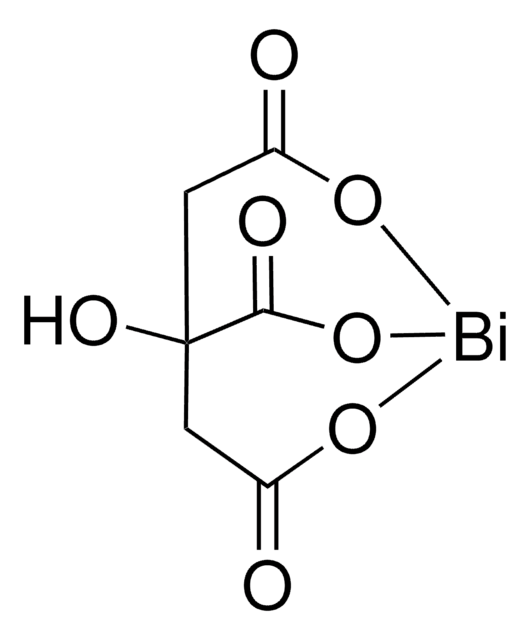467839
Bismuth(III) nitrate pentahydrate
≥99.99% trace metals basis
Synonym(s):
Bismuth trinitrate pentahydrate
About This Item
Recommended Products
Assay
≥99.99% trace metals basis
form
solid
reaction suitability
core: bismuth
reagent type: catalyst
impurities
≤0.005% insolubles
<100 ppm total metallic impurities
bp
75-80 °C (lit.)
mp
30 °C (lit.)
anion traces
chloride (Cl-): ≤0.001%
sulfate (SO42-): ≤0.005%
cation traces
Ag: ≤0.001%
As: ≤0.001%
Ca: ≤0.005%
Cu: ≤0.002%
Fe: ≤0.001%
K: ≤0.01%
Na: ≤0.02%
Pb: ≤0.002%
SMILES string
O=[N+](O[Bi](O[N+]([O-])=O)O[N+]([O-])=O)[O-].C
InChI
1S/CH4.Bi.3NO3/c;;3*2-1(3)4/h1H4;;;;/q;+3;3*-1
InChI key
DPLOIMSBRDLLRI-UHFFFAOYSA-N
Looking for similar products? Visit Product Comparison Guide
Application
Signal Word
Danger
Hazard Statements
Precautionary Statements
Hazard Classifications
Eye Dam. 1 - Ox. Sol. 2
Storage Class Code
5.1B - Oxidizing hazardous materials
WGK
WGK 2
Flash Point(F)
Not applicable
Flash Point(C)
Not applicable
Personal Protective Equipment
Certificates of Analysis (COA)
Search for Certificates of Analysis (COA) by entering the products Lot/Batch Number. Lot and Batch Numbers can be found on a product’s label following the words ‘Lot’ or ‘Batch’.
Already Own This Product?
Find documentation for the products that you have recently purchased in the Document Library.
Customers Also Viewed
Our team of scientists has experience in all areas of research including Life Science, Material Science, Chemical Synthesis, Chromatography, Analytical and many others.
Contact Technical Service













